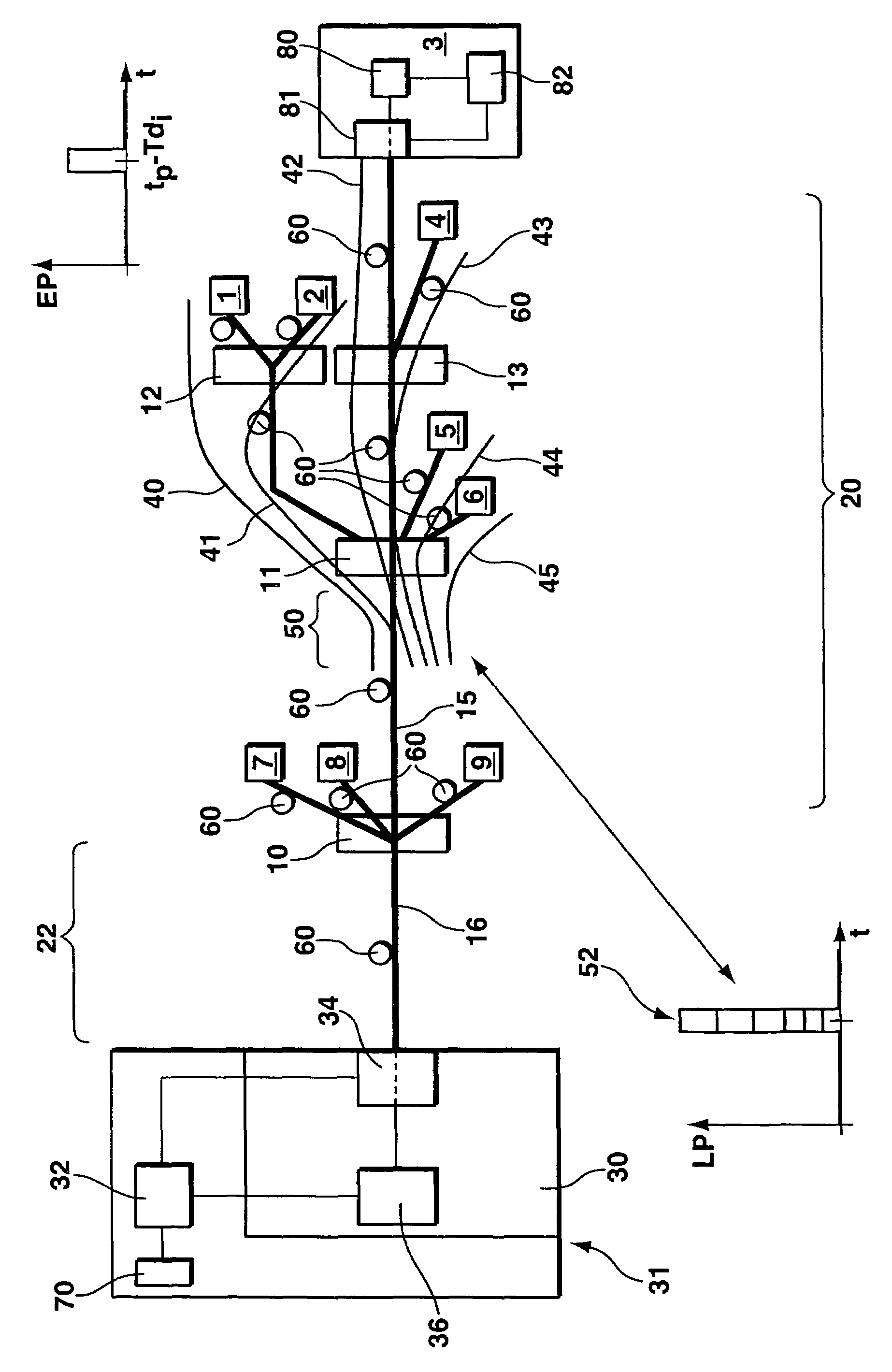Passive optical network monitoring method and passive optical network
a passive optical network and monitoring method technology, applied in the field of passive optical networks, can solve the problems of difficult separation, unfavorable chromatic dispersion change, and distortion of transmitted data, and achieve the effect of reducing the attenuation of round trip
- Summary
- Abstract
- Description
- Claims
- Application Information
AI Technical Summary
Benefits of technology
Problems solved by technology
Method used
Image
Examples
Embodiment Construction
[0043]The Optical Distribution Network is shown schematically. The Optical Distribution Network is comprising four passive distribution nodes 10-13, e.g. optical splitters, and optical fiber links 15 of a distribution section 20 behind the first passive distribution node 10, meaning the range between the first distribution node 10 and fiber terminating Optical Network Units 1-9 (subscriber stations), and an optical fiber link 16 of a feeder section 22 up to said first passive distribution node 10. The passive Optical Distribution Network is comprising nine Optical Network Units 1-9 and an Optical Line Terminal 30 as transceiver devices. Eight of the ONUs are only shown as single boxes for illustration purposes. The Optical Line Terminal 30 is part of a central station 31 according to the invention. The central station 31 of the Passive Optical Network is comprising time scheduling means 32 and sending means 34, which are identical with sending means of the OLT 30. The time schedulin...
PUM
 Login to View More
Login to View More Abstract
Description
Claims
Application Information
 Login to View More
Login to View More - R&D
- Intellectual Property
- Life Sciences
- Materials
- Tech Scout
- Unparalleled Data Quality
- Higher Quality Content
- 60% Fewer Hallucinations
Browse by: Latest US Patents, China's latest patents, Technical Efficacy Thesaurus, Application Domain, Technology Topic, Popular Technical Reports.
© 2025 PatSnap. All rights reserved.Legal|Privacy policy|Modern Slavery Act Transparency Statement|Sitemap|About US| Contact US: help@patsnap.com


